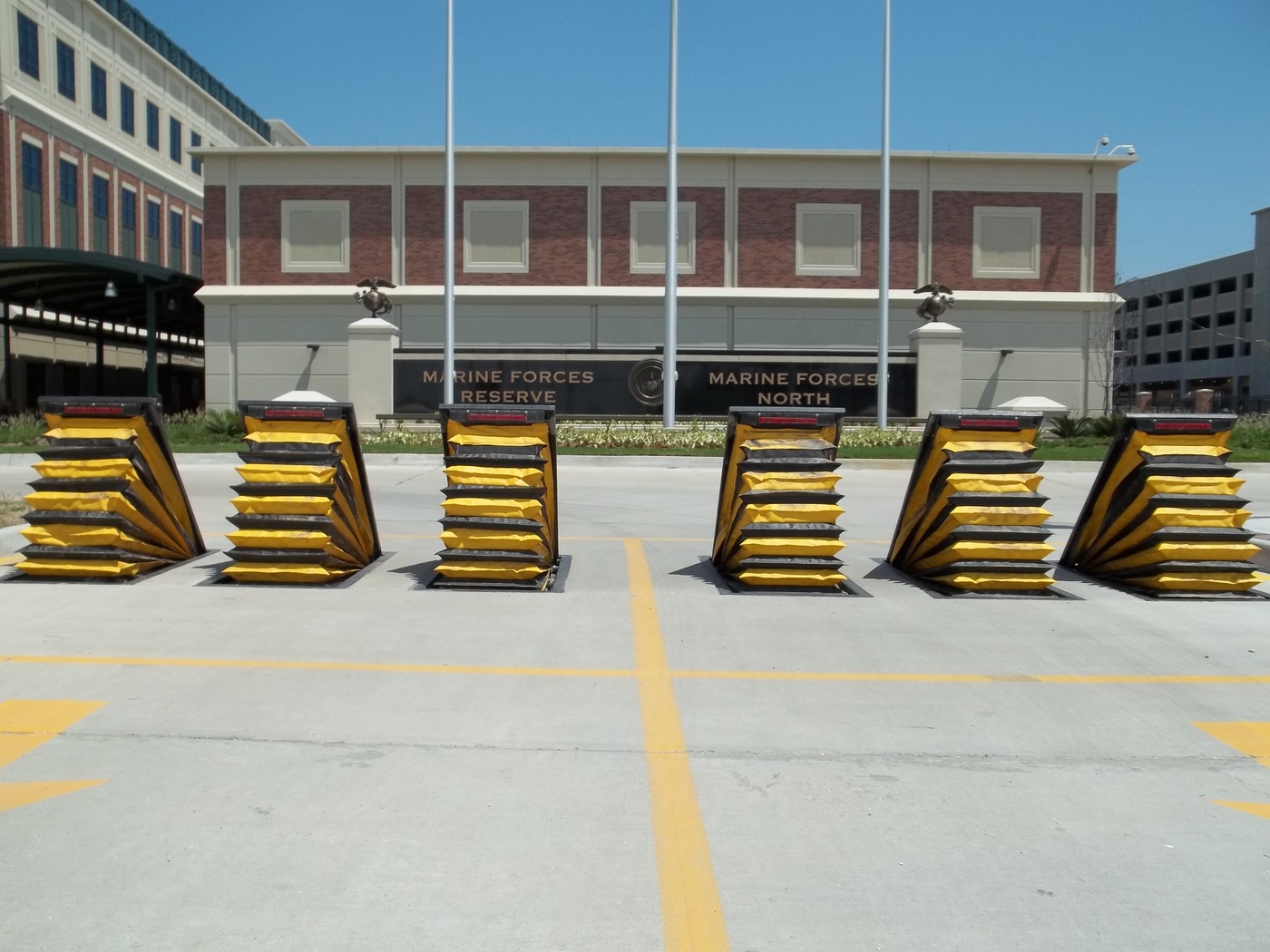The smart Trick of Wedge Barriers That Nobody is Talking About
Wiki Article
The smart Trick of Wedge Barriers That Nobody is Discussing


The spring rod 58 is combined to a camera(e. g., web cam 80 displayed in FIG. 4) of the training system 50. The springs 60 disposed about the spring pole 58 are kept in compression by springtime supports 62, including a dealt with spring support 64. That is, the fixed springtime support 64 is fixed about the foundation 14 and the rest of the bather 10.
See This Report about Wedge Barriers
The remaining pressure used to the cam web cam deploy the wedge plate 16 may be provided offered an electromechanical actuator 84 or other actuator. The springtime setting up 54 and the actuator 84(e. Wedge Barriers. g., electromechanical actuator)may operate together to translate the web cam and raise the wedge plate 16.
As discussed over, the spring setting up 54 applies a consistent force on the webcam, while the electromechanical actuator might be managed to exert a variable force on the webcam, thus allowing the lifting and decreasing( i. e., releasing and retracting )of the wedge plate 16. In specific embodiments, the consistent force used by the spring assembly 54 might be adjustable. g., electromechanical actuator) is disabled. As will certainly be valued, the springtime assembly 54 might be covered and protected from particles or various other aspects by a cover plate(e. g., cover plate 68 displayed in FIG. 4) that might be considerably flush with the raised surface area 38 of the structure 14. As pointed out over, in the deployed position, the wedge plate 16 offers to block accessibility or travel beyond the barrier 10. For instance, the obstacle 10(e. g., the wedge plate 16 )might block pedestrians or vehicles from accessing a home or pathway. As talked about over, the obstacle 10 is attached to the support 30 safeguarded within the structure you can try these out 14,

front visit this web-site brackets 71. Consequently, the linkage assemblies 72 may pivot and rotate to make it possible for the collapse and extension of the affiliation assemblies 72 throughout retraction and implementation of the bather 10. The linkage settings up 72 cause activity of the wedge plate 16 to be limited. For instance, if a lorry is traveling towards the deployed wedge plate 16(e. For instance, in one situation, the safety and security legs 86 may be expanded duringupkeep of the obstacle 10. When the safety and security legs 86 are deployed, the security legs 86 support the weight of the wedge plate 16 against the surface area 12. Because of this, the lifting mechanism 50 may be deactivated, serviced, eliminated, replaced, and so forth. FIG. 5 is partial viewpoint sight of an embodiment of the surface-mounted wedge-style barrier 10, highlighting the camera 80 and the webcam surface areas 82 of the training device 50. Especially, two webcam surface areas 82, which are described as lower camera surfaces 83, are positioned listed below the cam 80. The lower webcam surface areas 83 may be repaired to the surface area 12 (e. For example, the lower cam surface areas 83 and the placing plate 85 may form a single item that is safeguarded to the anchor 30 by screws or other mechanical fasteners. Additionally, two webcam surface areas 82, which are described as top cam surfaces 87, are placed above the camera 80 and combined to (e. In other embodiments, interfering layers or plates might be positioned in between the surface 12 and the lower web cam surfaces 83 and/or the wedge plate 16 and the explanation upper camera surface areas 87 As stated over, the web cam 80 converts along the camera surface areas 82 when the wedge plate 16 is raised from the pulled back setting to the deployed placement. In addition, as discussed above, the spring assembly 54 (see FIG. 3 )may provide a force acting on the web cam 80 in the direction 102 via springtime pole 58, which may lower the force the electromechanical actuator 84 is called for to relate to the webcam 80 in order to actuate and raise the wedge plate 16. 1 )to the deployed placement(see FIG. 4). As revealed, the camera 80 consists of track wheels 104(e. g., rollers), which contact and translate along the cam surface areas 82 during procedure.
Report this wiki page